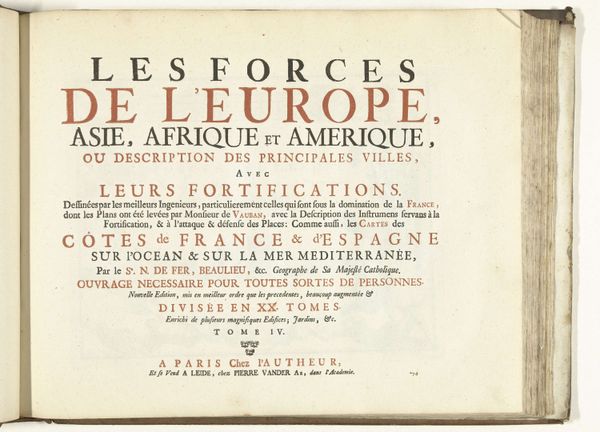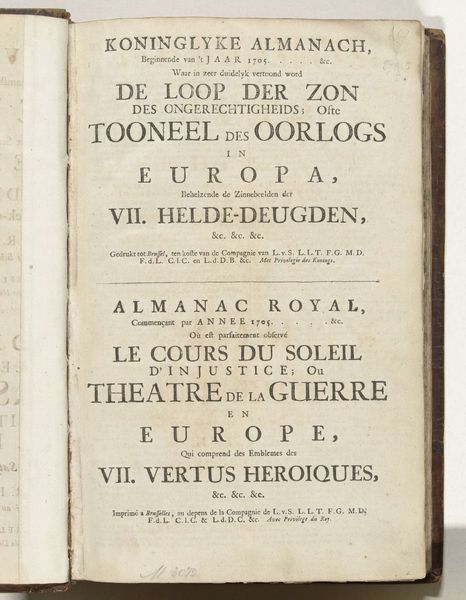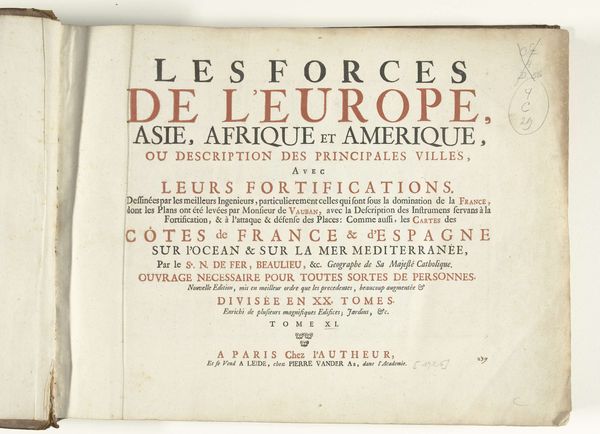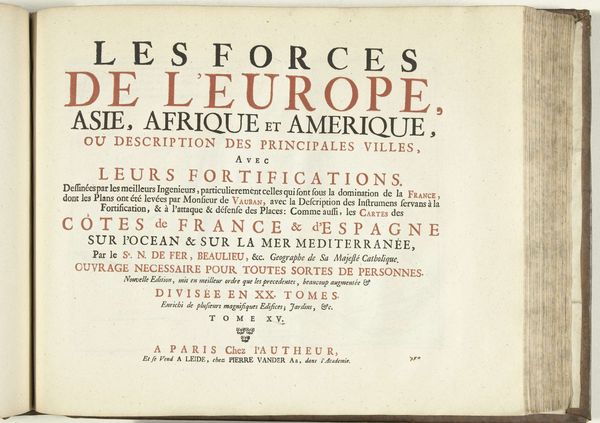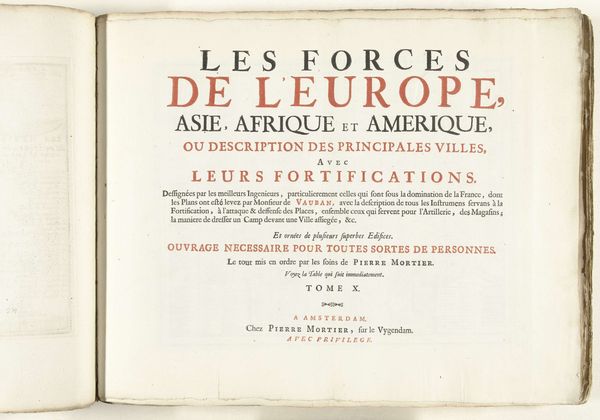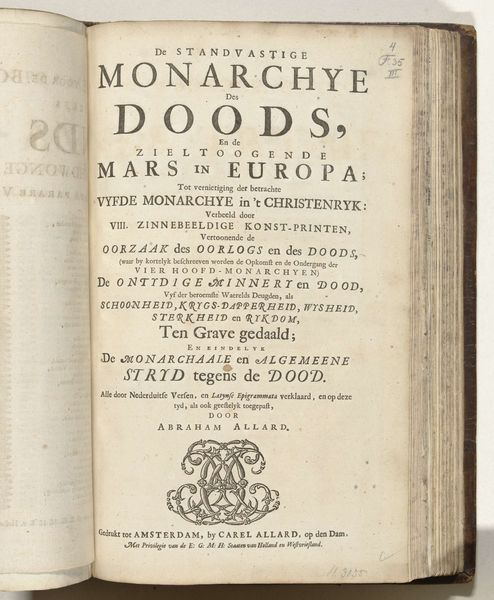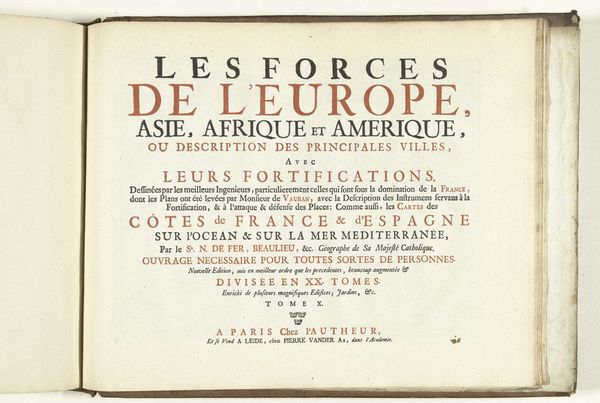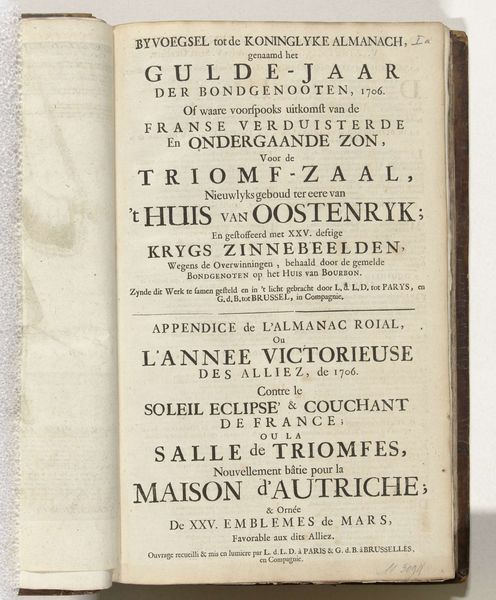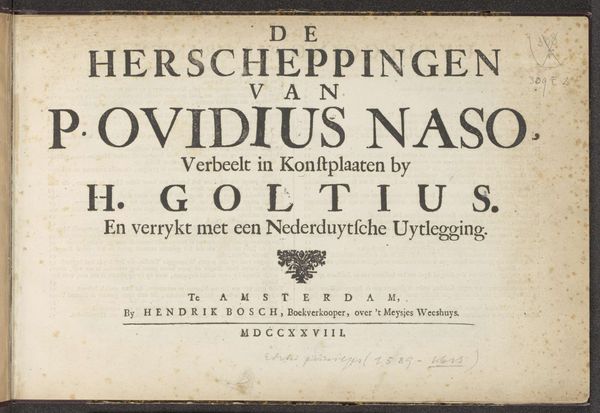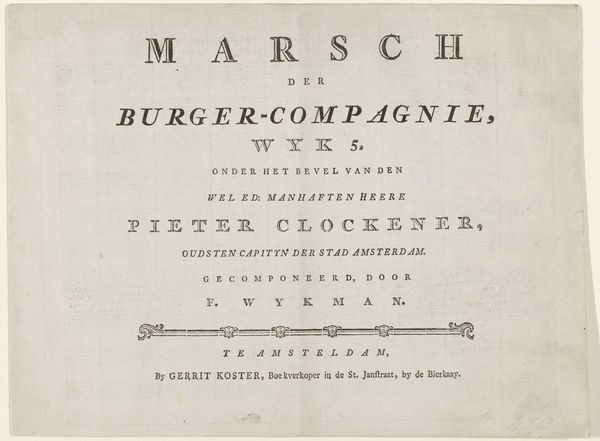
print, textile, typography
#
aged paper
#
hand-lettering
#
baroque
# print
#
hand drawn type
#
textile
#
tea stained
#
typography
#
hand-written
#
stylized text
#
thick font
#
handwritten font
#
golden font
#
historical font
Dimensions: height 315 mm, width 355 mm
Copyright: Rijks Museum: Open Domain
Editor: This is the title page for "t Lust-Hof van Momus," created around 1713 by Abraham Allard. It's a print, with text in both Dutch and French. The layout is striking; very blocky, using different fonts, with an aged look. What stories do you see in it? Curator: Well, this isn't just about aesthetics; it’s a window into early 18th-century political and social dynamics. The very act of creating a satirical commentary on "Mars in Europa"—Mars being the Roman god of war—suggests a critical perspective on the ongoing conflicts. Who profits, who suffers? Editor: So it's like a commentary on the nature of war at that time. But, looking at the typography, how does the form reflect the function? Curator: The "thick fonts," the 'aged paper,' that gives it weight. Consider this title page not just as a piece of design, but as a battle cry in ink. The baroque style would add an element of propaganda. Do you notice the pairing of Dutch and French languages? Who do you imagine was the intended audience and why? Editor: Interesting that you ask, because this mix is an explicit appeal to both cultural groups at a politically charged time, aiming for a wider readership in Europe! Curator: Exactly! And within that accessibility, it pushes those state borders, reflecting on privilege and satire across various factions. Allard strategically situates this “Lust-Hof,” this pleasure garden, amidst a war. Is this suggesting pleasure in war, or pleasure despite war? Editor: That's quite a nuanced view of how an artwork can serve multiple social and political purposes at once. It shows that even a title page can be deeply layered. Thanks for clarifying! Curator: Of course. Considering art within broader societal structures is essential; always asking "who benefits?" leaves a rich interpretation.
Comments
No comments
Be the first to comment and join the conversation on the ultimate creative platform.
